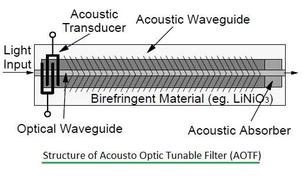Single vs. Double Monochromator: Key Differences Explained
Advertisement
This article compares single monochromators and double monochromators, highlighting the differences between Optical Spectrum Analyzers (OSAs) based on each. As we know, an Optical Spectrum Analyzer is used to plot optical signals.
To plot the optical signal, the incoming light is passed through a wavelength-tunable optical filter, which can be either a monochromator or an interferometer. This filter separates individual spectral components of the light signal.
There are different types of Optical Spectrum Analyzers (OSAs), including:
- Interferometer-based OSA (e.g., Fabry Perot and Michelson types)
- Diffraction grating-based OSA
The most common OSA uses a monochromator as the tunable optical filter. Within the monochromator, a diffraction grating separates different wavelengths of the light signal with less attenuation, resulting in better wavelength resolution. Diffraction grating-based OSAs consist of one of the following monochromator types:
- Single Monochromator
- Double Monochromator
- Double Pass Monochromator
Single Monochromator-Based Optical Spectrum Analyzer

Figure 1: Single Monochromator used in OSA
Figure 1 depicts a single monochromator used in an OSA. It takes the light signal as input and provides an electrical output. The second concave mirror is used to focus the desired wavelength at the aperture. The aperture width is variable and determines the wavelength resolution of the OSA instrument.
Double Monochromator-Based Optical Spectrum Analyzer

Figure 2: Double Monochromator used in OSA
Figure 2 depicts a double monochromator used in an OSA. It performs the same function as a single monochromator but is essentially a pair of sweeping filters. The primary reason for using a double monochromator is to increase the dynamic range compared to what’s achievable with a single monochromator.
However, a limitation of the double monochromator is its degraded sensitivity due to inherent losses.
Advertisement
 RF
RF


